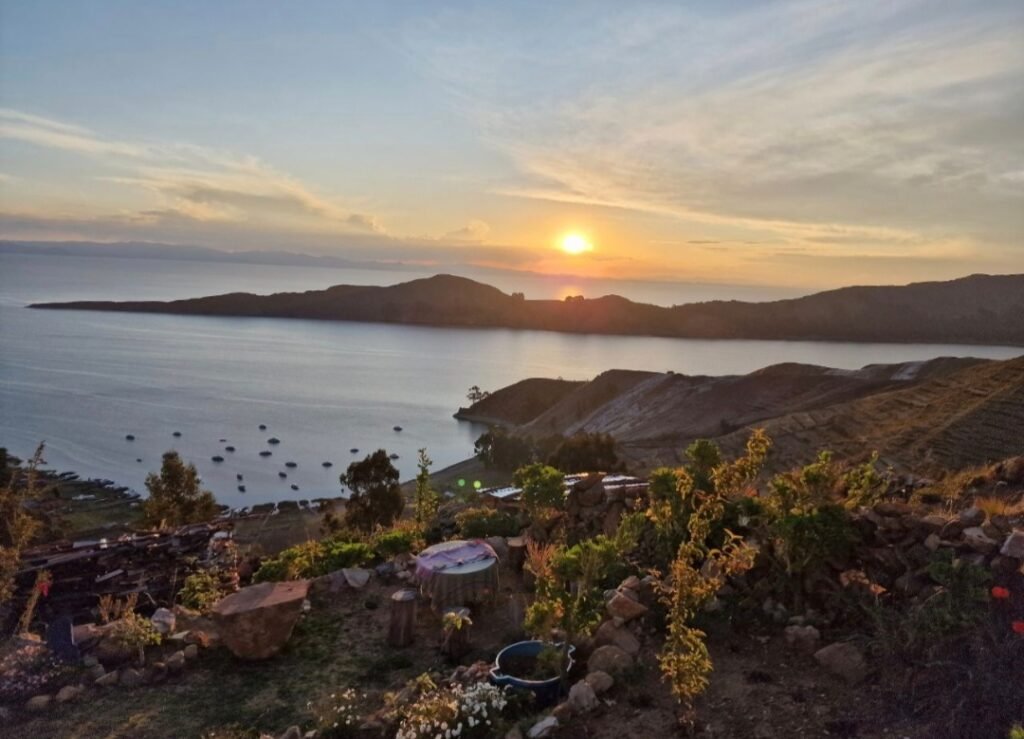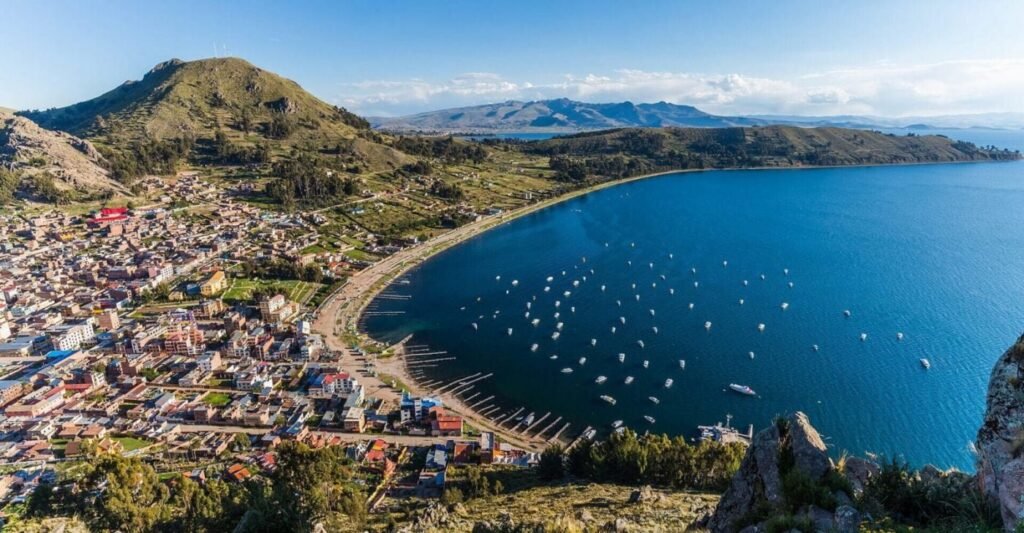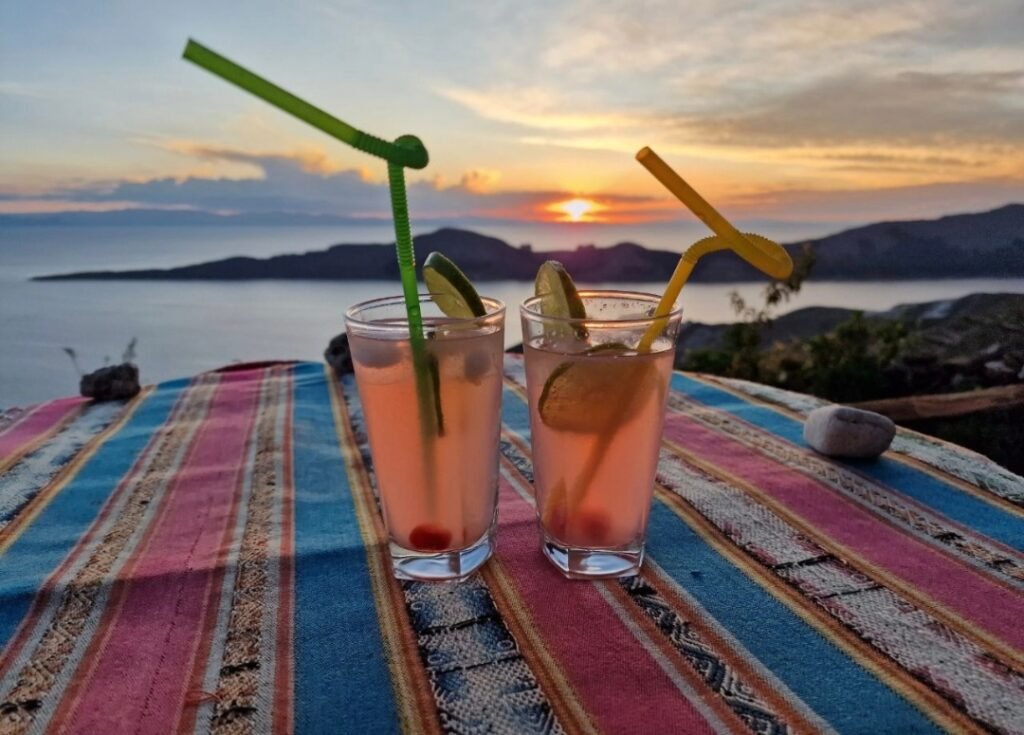
A few words about Lake Titicaca
The world´s highest lake navigable to large vessels, lying at 12,500 feet (3,810 metres) above
sea level in the Andes Mountains of South America, astride the border between Peru to the
west and Bolivia to the east. Titicaca is the second largest lake of South America (after Maracaibo).
It covers some 3,200 square miles (8,300 square km) and extends in a northwest-to-southeast direction for a distance of 120 miles (190 km).
The meaning of the name Titicaca is uncertain, but it has been variously translated as Rock of
the Puma or Crag of Lead.
Around Lake Titicaca
Visit Isla del Sol
Isla del Sol is one of the most famous and important islands on Lake Titicaca. It’s known for its spiritual significance to the Incas and its stunning views of the lake. The island is dotted with Incan ruins, including the Temple of the Sun and the Sacred Rock. You can hike along the island’s trails, visit the small villages, and enjoy the beautiful scenery. Boats depart from the town of Copacabana to Isla del Sol.
Isla de la Luna has a rich history, particularly in the context of the Inca Empire. According to local legend and Andean mythology, it was considered a sacred place, and its significance is tied to the creation myths and religious practices of the indigenous Aymara and Quechua peoples.

Explore Copacabana
Copacabana is the main town on the Bolivian side of Lake Titicaca, and it’s a popular base for visitors. You can visit the beautiful Basilica of Our Lady of Copacabana, which is one of the most important religious sites in Bolivia. The church houses a revered image of the Virgin of Copacabana, which is believed to have miraculous powers. The town also has a vibrant market where you can buy local handicrafts, food, and souvenirs.

Take a Boat Tour to Isla de la Luna
Isla de la Luna is a smaller island compared to Isla del Sol. It is home to some lesser-known Inca ruins, including the Inca Virgin Temple. It is an excellent spot for a peaceful escape with fewer tourists. Boat trips to Isla de la Luna are usually combined with visits to Isla del Sol.
Isla de la Luna has a rich history, particularly in the context of the Inca Empire. According to local legend and Andean mythology, it was considered a sacred place, and its significance is tied to the creation myths and religious practices of the indigenous Aymara and Quechua peoples.


The Tiwanaku Archaeological Ruins (also spelled Tiahuanaco) are one of the most important and impressive ancient sites in the Andean region of South America. Located in western Bolivia, Tiwanaku was the center of a powerful and influential civilization that thrived from around 300 AD to 1000 AD. It is widely regarded as one of the most advanced pre-Columbian cultures in the Americas, with profound achievements in architecture, engineering, agriculture, and astronomy.








